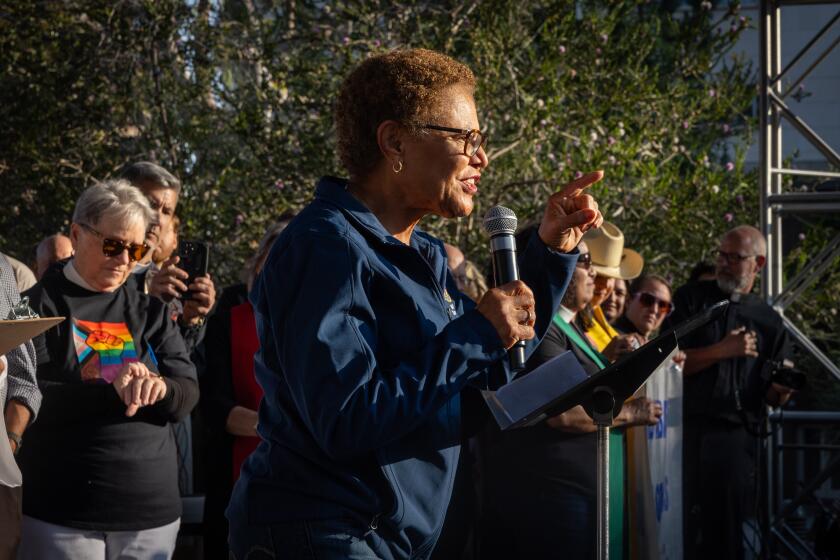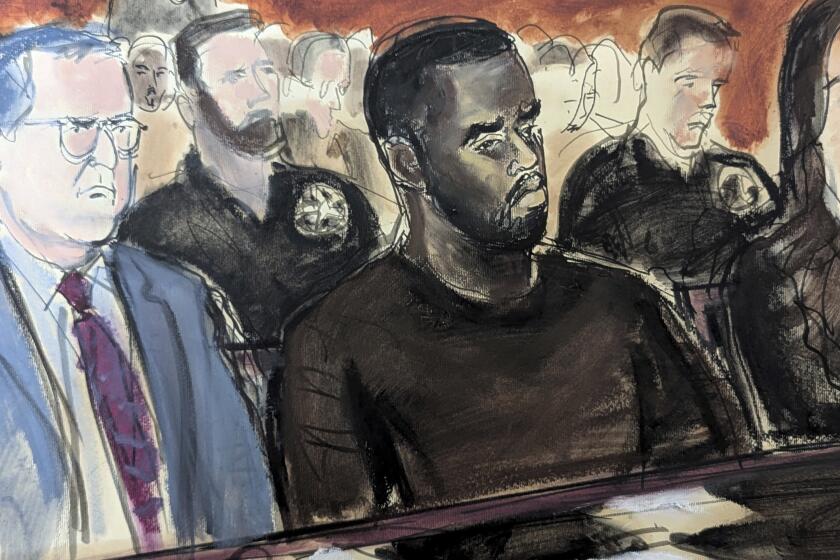Institute Sues Rocketdyne Over Toxics
- Share via
Officials with the Brandeis-Bardin Institute near Simi Valley filed a federal lawsuit against their next-door neighbor Rocketdyne Thursday, alleging that the rocket maker’s nuclear contamination of the area’s ground water lowered the value of the institute’s property.
The suit also alleges that the rustic family recreational center was forced to hire environmental consultants to examine the contamination, which was discovered in 1991. The suit seeks unspecified damages.
Researchers at Rocketdyne’s Santa Susana Field Laboratory conducted nuclear research in the Simi Hills for more than three decades. Despite extensive cleanup efforts in recent years, portions of the property still contain chemical and radioactive contamination, most of it at low levels.
Studies conducted in the last four years show that Brandeis’ ground water and surrounding soil have also been contaminated with a chemical solvent and various radioactive materials.
“They cannot and are not using the ground water,” said Brandeis’ lawyer, Helen E. Zukin, alleging that enough toxic solvent has leaked across the property line to render the ground water undrinkable. The institute, however, has never used the ground water, she said.
Further, the suit maintains that the fact that any contamination occurred lowers the value of Brandeis’ property should officials ever decide to sell any of the center’s 3,100 acres. The contaminated areas of Brandeis’ land are near the property line it shares with Rocketdyne and is well removed from the main activity center of the institute.
“This is a complaint for property damage,” Zukin said. “We are not alleging that anyone has ever been injured.”
The suit was filed in U.S. District Court in Los Angeles because nuclear contamination lawsuits are covered by federal law, Zukin said.
Rocketdyne officials Thursday said they were caught off guard by the lawsuit, adding that they have been trying to resolve the problem with Brandeis officials and hoped that an out-of-court settlement could be reached.
“We have been working with them for years and we are surprised and saddened to see the suit,” spokesman Paul Sewell said, declining further comment on the suit.
But Zukin said the company, a division of Rockwell International Corp., has been slow and haphazard in its cleanup effort and that Brandeis officials felt that out-of-court discussions “have been exhausted.”
“They continue to be cited for cleanup violations,” Zukin said.
In 1992, the company paid $650,000 to settle a state hazardous-waste lawsuit for contamination at Santa Susana and several other locations. Currently, federal officials are conducting a criminal investigation into the events surrounding a 1994 explosion that killed two physicists. Among other things, authorities are trying to determine if the explosion occurred during a scientific experiment, as Rocketdyne maintained, or if the company was attempting to secretly dispose of explosive wastes.
There is also the fear that contamination on Rocketdyne’s property will continue to spoil the Brandeis center’s land, Zukin said.
Daniel O. Hirsch, president of an environmental group that monitors the Rocketdyne facility, said the Brandeis contamination is probably “merely the front of a large, contaminated plume” on the other side of the property line that will take decades to clean.
“We don’t believe they will reach cleanup for 50 years,” Hirsch said. “And there is substantial doubt that the ground water will ever be cleaned.”
The Brandeis-Bardin Institute runs children’s summer camps and offers weekend retreats for adults on the sprawling, wooded campus. The center, located southeast of the Rocketdyne facility, moved to Santa Susana from New York in 1947.
Until the last decade, Hirsch said, Rocketdyne’s neighbors--as well as the public--were unaware of the nuclear work researchers were doing in Ventura County. The Santa Susana lab sits on 2,700 acres in the Simi Hills and employs 700 workers.
“Rocketdyne is the classic bad neighbor,” Hirsch said. “But instead of playing the stereo loud, they dumped cancer-causing materials into their neighbors’ backyard.”
Times staff writer Myron Levin contributed to this story.
More to Read
Sign up for Essential California
The most important California stories and recommendations in your inbox every morning.
You may occasionally receive promotional content from the Los Angeles Times.













